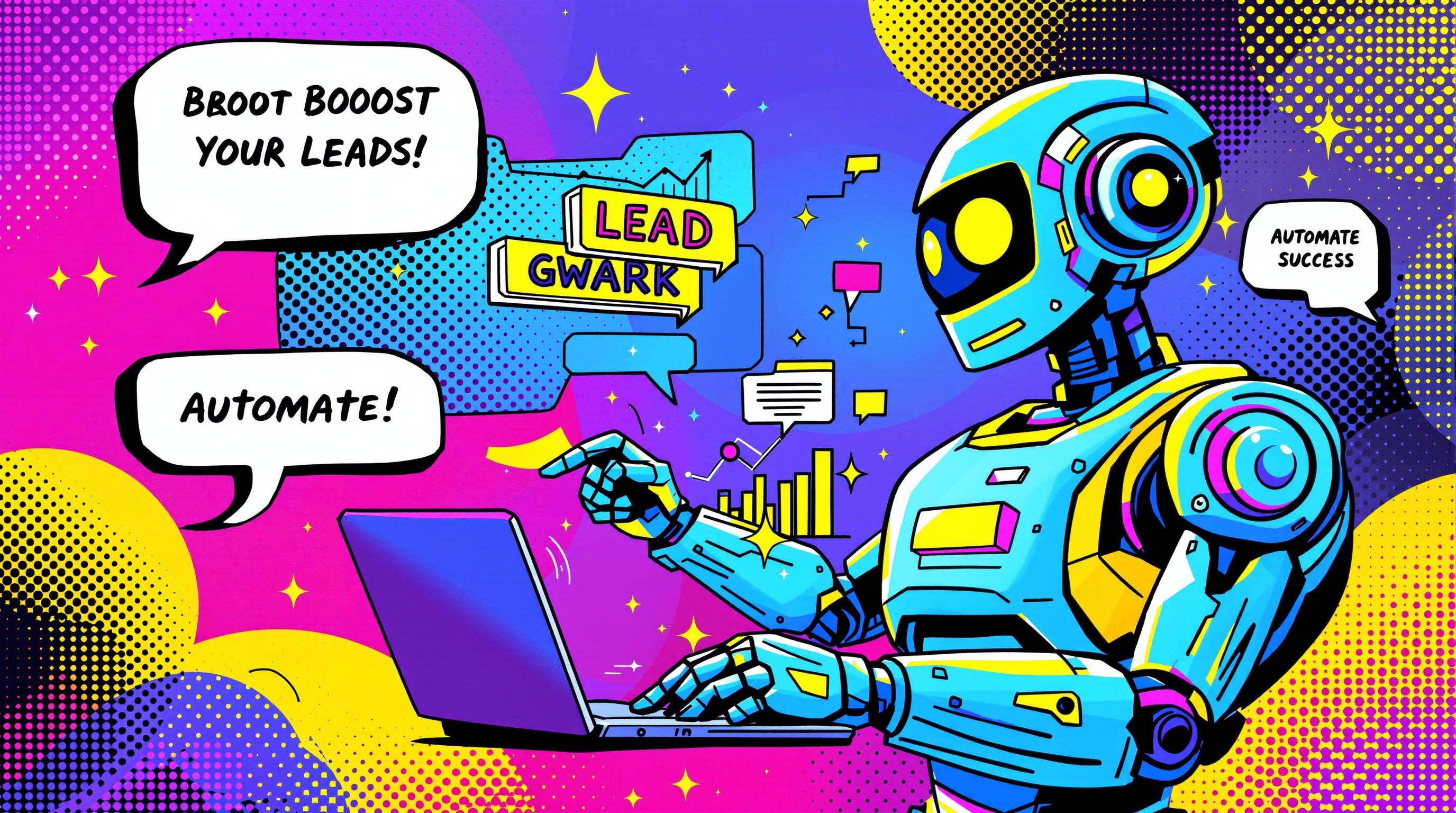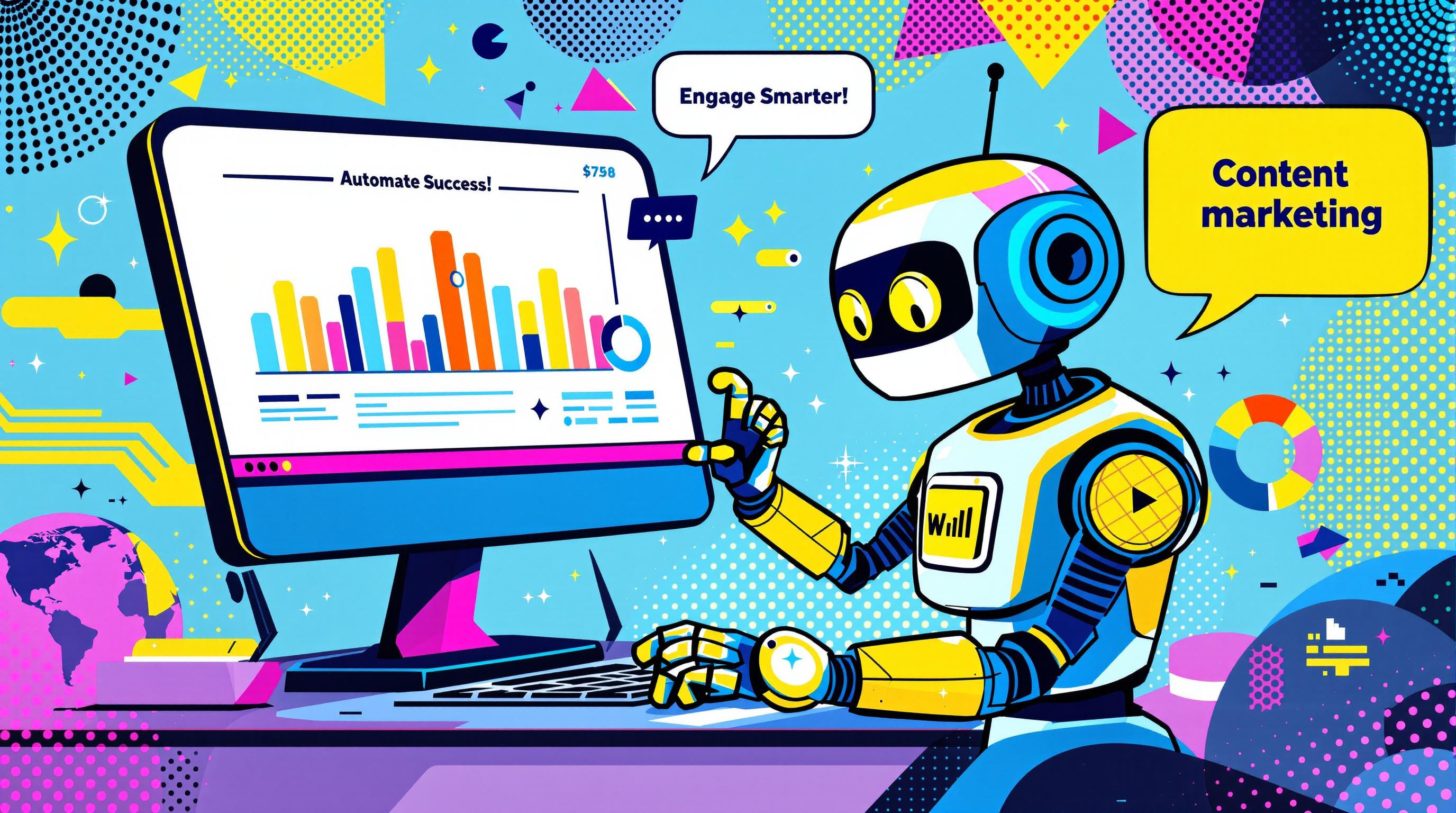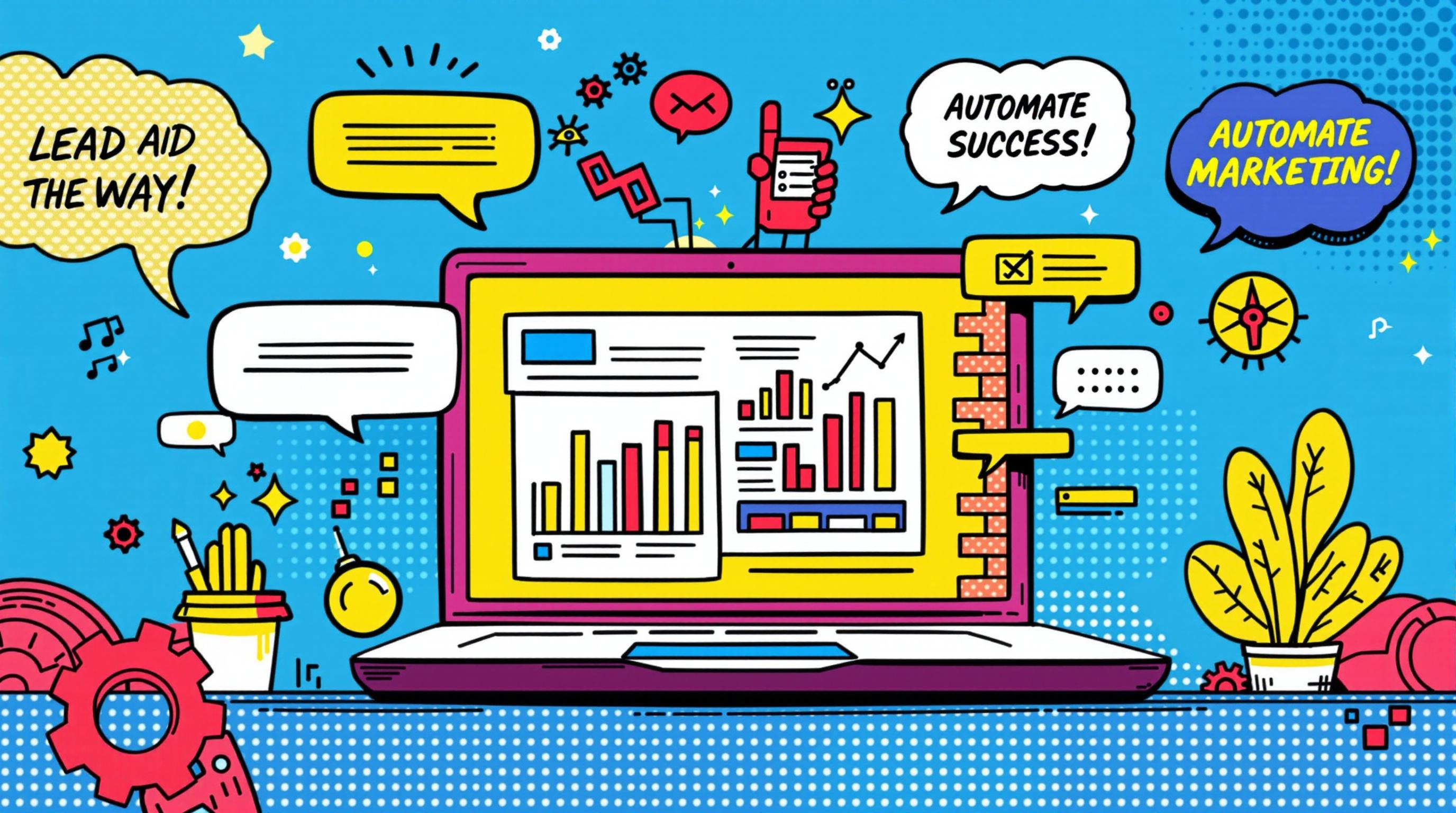Want to make the most of AI in your marketing? Avoid these five common mistakes:
- Skipping Clear Goals: Without specific targets, you can't measure success or ROI. Set measurable objectives like increasing retention by X% or cutting acquisition costs by Y%.
- Removing Human Oversight: AI isn't perfect - it can make errors that harm your brand. Always review AI outputs for accuracy, tone, and compliance.
- Using Poor Data: Bad data leads to bad AI results. Regularly audit, clean, and validate your data to ensure reliable insights.
- Choosing the Wrong Tools: Not all AI solutions fit your needs. Pick tools that align with your goals, integrate well, and scale effectively.
- Neglecting Staff Training: Employees need training to trust and use AI effectively. Offer hands-on learning and ongoing support.
Quick Tip: Combine AI's speed with human expertise for the best results. Start small, track progress, and refine your approach over time.
TOP 5 AI Tools For Marketing Automation That Boost Your Business
1. Missing Clear Goals and Success Metrics
Not setting clear objectives and measurable success markers can derail AI marketing efforts. Research shows that 82% of marketers recognize AI's role in content creation, yet many fail to define specific goals before starting AI projects. Without clear targets, AI investments often miss the mark and fail to align with business needs.
When goals are vague, measuring ROI becomes impossible, and the data AI generates becomes irrelevant. Christina McAllister, Senior Analyst at Forrester, emphasizes this point:
"Whilst AI can deliver 'enormous value,' it needs to be leveraged intentionally."
Take Google Ads campaigns as an example. Companies using AI effectively monitor specific metrics like:
| Metric Category | What to Measure |
|---|---|
| Agent Success | Campaign ROI targets |
| Tool Selection | API integration accuracy |
| Cost Efficiency | Ad spend optimization |
| Performance | Conversion rates and CPC |
This structured approach works. Businesses that use AI with clear objectives save an average of 2.5 hours per employee daily, and 68% report achieving scaling that wasn’t possible before.
To avoid this mistake, define measurable goals before using AI. Instead of vague objectives like "improve marketing performance", set specific targets such as:
- Increase customer retention by X%
- Generate Y% more qualified leads
- Lower customer acquisition costs by Z%
Success metrics should cover three main areas:
- Technical performance: System reliability and response times
- Business impact: ROI and conversion rates
- Quality assurance: Accuracy and customer satisfaction
The success of AI depends on how well it aligns with your business goals. Skipping this planning phase often results in tools that fail to deliver.
Start small, test thoroughly, and measure progress against clear benchmarks. With well-defined goals, AI becomes more than just a tool - it becomes a strategic partner.
2. Removing Human Input and Review
Skipping human oversight in AI-driven marketing can harm your brand's reputation and weaken customer relationships. While setting clear objectives is essential, ensuring human involvement in the process is equally important for success.
AI-generated errors, often called "hallucinations", occur in 3%–27% of interactions. These mistakes can disrupt messaging accuracy and damage your brand's integrity.
A 2024 survey by Filestage found that about two-thirds of marketers hide their use of AI. This lack of transparency can lead to several risks:
| Risk Category | Potential Impact |
|---|---|
| Brand Consistency | Misaligned messaging and tone |
| Legal Compliance | Copyright violations and regulatory issues |
| Content Quality | Factual errors and AI-generated inaccuracies |
| Customer Trust | Impersonal or inappropriate communications |
To address these risks, consider implementing a multi-layered review process:
- Technical Review: Focus on accuracy and compliance with guidelines.
- Creative Review: Ensure the content aligns with your brand's voice and connects emotionally with your audience.
- Legal Review: Confirm adherence to copyright laws and regulatory standards.
Striking the right balance between automation and human input is key. AI can analyze customer data and draft initial content, but human marketers must refine and tailor this output to resonate with the target audience. This approach not only improves efficiency but also preserves the creative touch.
Research supports this balanced strategy - 95% of professionals say AI reduces manual tasks. However, the most effective implementations keep human oversight at every stage, combining AI's speed with human expertise to create impactful campaigns.
To avoid potential pitfalls, establish clear review protocols:
- Develop transparent workflows for AI usage.
- Use AI governance tools to monitor and manage outputs.
- Conduct regular legal audits to ensure compliance.
- Train your team to effectively review and refine AI-generated content.
sbb-itb-3fa07bc
3. Poor Data Quality Management
Poor data quality can seriously derail AI marketing efforts. In fact, it costs U.S. businesses around $3.1 trillion annually, with the average company losing up to $12.9 million per year due to bad data.
Here’s how poor data impacts marketing operations:
| Impact Area | Consequence | Percentage Affected |
|---|---|---|
| Marketing Budget | Wasted media spend | 21% of budget |
| Team Productivity | Time spent fixing data | Up to 33% |
| Lead Generation | Failed sales closures | 66% of leads |
| Customer Records | Critical data errors | 25% of records |
Unlike issues caused by unclear goals or lack of oversight, poor data quality directly disrupts AI outcomes. Over 60% of businesses report failures in their AI and machine learning projects due to inconsistent data or an overabundance of data sources. Additionally, 25% of companies with more than 500 employees have lost customers because of incomplete or inaccurate data. These challenges highlight the need for effective data management.
"AI's effectiveness is fundamentally constrained by the quality of its input data. Incomplete or unreliable data will inevitably lead to compromised analytical insights, potentially biased outcomes, and increased costs associated with rectification. Bad data leads to bad AI outcomes."
– Six & Flow
These problems weaken marketing campaigns and demand immediate attention. To address them, consider these data quality management strategies:
-
Establish Data Governance
Develop a unified content data model with a consistent yet flexible taxonomy. For example, General Electric's Predix platform uses automated tools for data cleansing and validation. -
Conduct Regular Data Audits
Periodically review your data systems to identify weaknesses. Airbnb’s "Data University" initiative improved employee engagement with data science tools, increasing usage from 30% to 45%. -
Use Automated Quality Control Tools
Invest in tools that automatically validate and monitor data streams. These tools help avoid issues like data poisoning or feedback loops that can harm AI model performance over time.
"If 80 percent of our work is data preparation, then ensuring data quality is the most critical task for a machine learning team."
– Andrew Ng, Professor of AI at Stanford University and founder of DeepLearning.AI
Data quality directly affects the success of AI in marketing. A survey found that 70% of businesses are unsure whether they can trust their data for AI training. By prioritizing strong data quality practices, you can sidestep the pitfalls that lead to failed AI projects.
4. Picking Mismatched AI Solutions
Selecting an AI tool that doesn't align with your marketing goals can lead to wasted resources, delayed rollouts, disengaged teams, and poor returns.
"AI is not a one-size-fits-all solution; its effectiveness depends on how well it aligns with your business objectives."
To ensure you're on the right track, consider these three critical factors when evaluating AI solutions:
- Infrastructure Compatibility: Make sure the AI tool works smoothly with your existing systems to avoid delays and ensure a successful launch.
- Data Readiness: Check the quality of your data before diving in. Setting up an AI Governance Committee can help manage platforms and oversee data practices effectively.
- Scalability Requirements: Opt for platforms that can handle growing data volumes and adapt to your changing needs. This helps keep long-term costs in check.
"Instead of adopting AI simply for innovation's sake, we prioritize implementing tools that provide clear, measurable benefits." – Introhive
Before a full rollout, test AI tools on a small campaign. Track key performance indicators (KPIs), gather team feedback, and analyze integration challenges and costs.
To get the most out of AI, keep monitoring how it fits with your marketing goals. The right AI solution should blend effortlessly into your workflow and deliver measurable improvements. Choose tools that address your specific needs rather than chasing the latest, most advanced options.
5. Skipping Staff Training and Adoption Plans
Effective staff training is essential to getting the most out of AI in marketing. While 75% of knowledge workers use AI, only 7% trust its results enough to rely on it for work-related tasks. Without proper training, employees struggle to unlock AI's full potential. In fact, 86% of workers say they need training, and 62% distrust AI due to unclear data practices. A structured training plan is key to addressing these challenges.
Take Amazon's warehouse robotics program as an example. By committing to create 100,000 new U.S. jobs by 2025 and focusing on employee development, they saw a 15% boost in employee satisfaction in automated facilities.
An effective AI training program should include:
- Clear Communication: Help employees understand AI's purpose, benefits, and limitations. According to the 2024 Edelman Trust Barometer, 68% of employees trust their employers more when leadership clearly explains technology changes.
- Hands-on Learning: Offer workshops and real-world exercises. Companies using AI-human collaboration models have reported productivity increases of up to 73%.
- Continuous Support: Appoint AI champions within teams and set up a centralized knowledge base to share effective prompts and use cases.
"For autonomous AI to take root in the enterprise, businesses and employees will need to overcome the trust gap and go through considerable training to effectively understand, manage, and make the most of this important technology."
– Jayesh Govindarajan, SVP of Salesforce AI
Siemens' AI Co-Creation Lab is another great example. By involving employees in AI development, they reduced skepticism by 40%. This collaborative approach helps build trust and encourages adoption.
"The adoption of AI is not just about technology; it's about empowering people to think differently and innovate beyond traditional boundaries."
– Stephen McClelland, ProfileTree's Digital Strategist
As AI continues to evolve, it's important to regularly update training programs. A strong training plan not only builds trust but also supports other key elements like goal setting, human oversight, data quality, and tool selection, ensuring a well-rounded AI marketing strategy.
Conclusion
Using AI agents in marketing requires careful planning and teamwork. To succeed, it's essential to treat AI as a partner that enhances efforts, not just as an automation tool.
The future of marketing lies in combining AI's capabilities with human expertise to reshape digital strategies. This shift involves adopting Human-AI Collaboration Models that support critical decision-making, regular oversight, and performance tracking.
One example of AI's impact: A consumer packaged goods company managed to cut costs by 95% and speed up processes by 50 times by using intelligent agents to produce blog content.
Industry leaders emphasize the importance of this change:
"AI agents aren't just the next step in the evolution of digitalization – they're fundamentally changing the way we experience and use software. They're bundling services, automating interactions and making software truly adaptive for the first time. Brands need to adjust to this change: In the future, AI agents will interact with each other to create completely new brand experiences." – Jens Christian Jensen, Chief Strategy Officer at Plan.Net and Head of the Artificial Intelligence: Value Chain Lab at the German Association for the Digital Economy (BVDW)
To ensure long-term success, businesses should establish strong oversight frameworks and build teams that include technical experts, business leaders, and ethics specialists. Regular audits, compliance reviews, and user feedback are crucial for keeping AI systems aligned with business goals while operating responsibly. These practices help maintain focus on both innovation and accountability.



